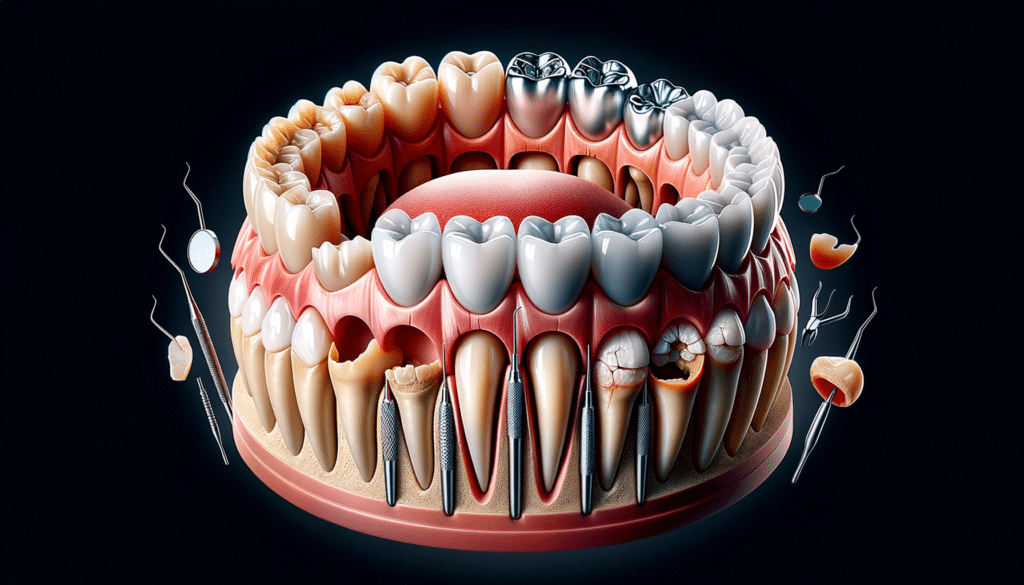Introduction to Dental Crowns
Dental crowns have long been a cornerstone in the field of restorative dentistry. These prosthetic devices are designed to cover and protect a tooth that has been compromised by decay, damage, or other forms of deterioration. By fitting over the existing tooth structure, crowns restore the tooth’s shape, size, strength, and appearance. The importance of dental crowns cannot be overstated, as they offer a solution that not only enhances dental aesthetics but also ensures the functional integrity of the teeth. With advancements in dental technology, crowns have become more accessible and varied, catering to the diverse needs of patients.
Types of Dental Crowns
Dental crowns come in several types, each tailored to specific needs and preferences. The most common types include:
- Metal Crowns: Known for their durability, metal crowns are made from alloys that include gold, palladium, or nickel. They are less likely to chip or break and are often used for molars that require significant strength.
- Porcelain-Fused-to-Metal (PFM) Crowns: These crowns offer a balance between strength and aesthetics. The metal provides a robust base, while the porcelain coating mimics the natural tooth color, making them a popular choice for both front and back teeth.
- All-Ceramic or All-Porcelain Crowns: Ideal for those with metal allergies or those seeking the most natural appearance, these crowns are highly aesthetic and are often used for front teeth.
- Resin Crowns: While more affordable, resin crowns are less durable and more prone to wear and tear, making them a temporary solution in many cases.
Each type of crown has its advantages and limitations, and the choice depends on factors such as the tooth’s location, the patient’s budget, and aesthetic preferences.
The Process of Getting a Dental Crown
Receiving a dental crown typically involves two visits to the dentist. During the first visit, the dentist examines and prepares the tooth, which may involve taking X-rays to check the roots and surrounding bone. If the tooth is severely decayed or if there is a risk of infection, a root canal treatment may be performed first.
Next, the tooth is reshaped to accommodate the crown. This involves removing a portion of the tooth to make room for the crown. An impression of the tooth is then made and sent to a dental laboratory, where the crown is custom-made. A temporary crown is placed to protect the tooth until the permanent crown is ready.
During the second visit, the temporary crown is removed, and the new crown is checked for fit and color. If everything is satisfactory, the crown is permanently cemented into place. The entire process ensures that the crown fits perfectly and matches the patient’s natural teeth.
Benefits and Considerations of Dental Crowns
Dental crowns offer numerous benefits, making them a popular choice for restorative dentistry:
- Restoration of Function: Crowns restore the normal function of teeth, allowing individuals to chew and speak effectively.
- Aesthetic Improvement: Crowns can significantly enhance the appearance of teeth, providing a natural and pleasing look.
- Durability: With proper care, dental crowns can last many years, making them a long-term solution for dental issues.
However, there are considerations to keep in mind. Crowns can sometimes become loose or fall out, requiring replacement. Additionally, the tooth underneath the crown can still be susceptible to decay, necessitating diligent oral hygiene practices. Regular dental check-ups are crucial to ensure the longevity and effectiveness of dental crowns.
Conclusion: The Role of Dental Crowns in Modern Dentistry
In conclusion, dental crowns play a vital role in modern dentistry, offering solutions for a variety of dental issues. They not only improve the aesthetic appeal of teeth but also restore and maintain their functionality. With different types available, patients can choose crowns that best fit their needs and preferences. While the process of getting a crown involves multiple steps, the benefits they provide in terms of durability and appearance are well worth the effort. As dental technology continues to evolve, the options and quality of dental crowns are expected to improve, providing even better outcomes for patients.





